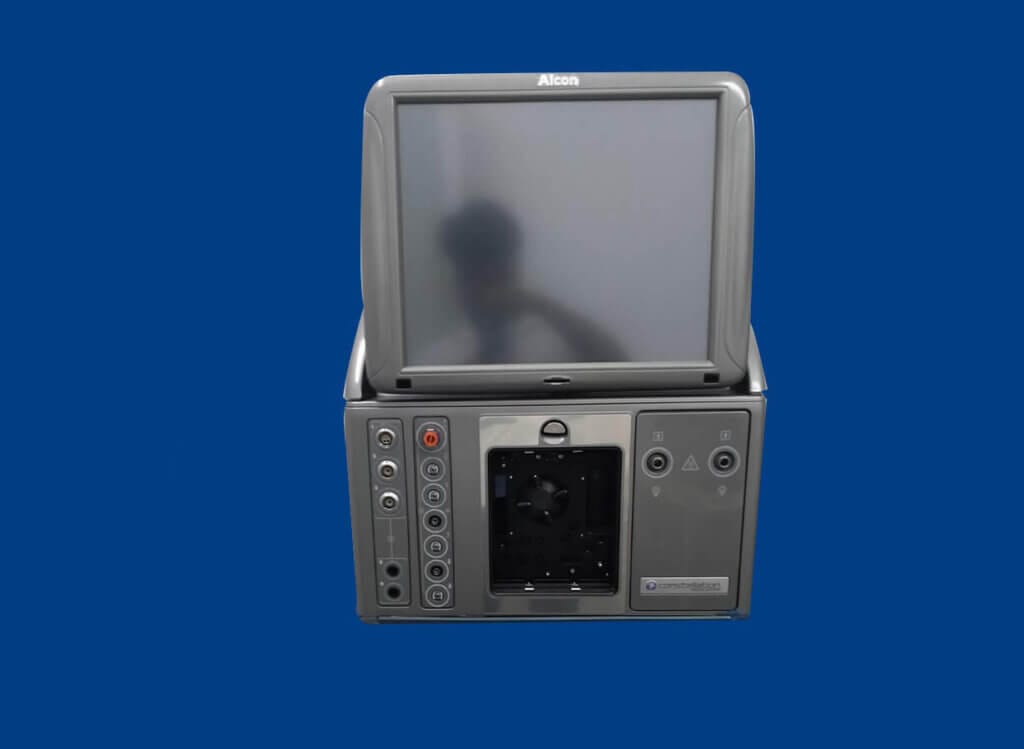Services
Keratometer
Keratometer measure the curvature of the cornea. It is often used in the evaluation and treatment of vision problems such as nearsightedness, farsightedness, and astigmatism. The resulting measurement can be used to determine the shape and curvature of the cornea, which is important in determining the appropriate eyeglass or contact lens prescription. It can also be used to monitor the progression of certain eye conditions and to evaluate the effectiveness of certain eye treatments
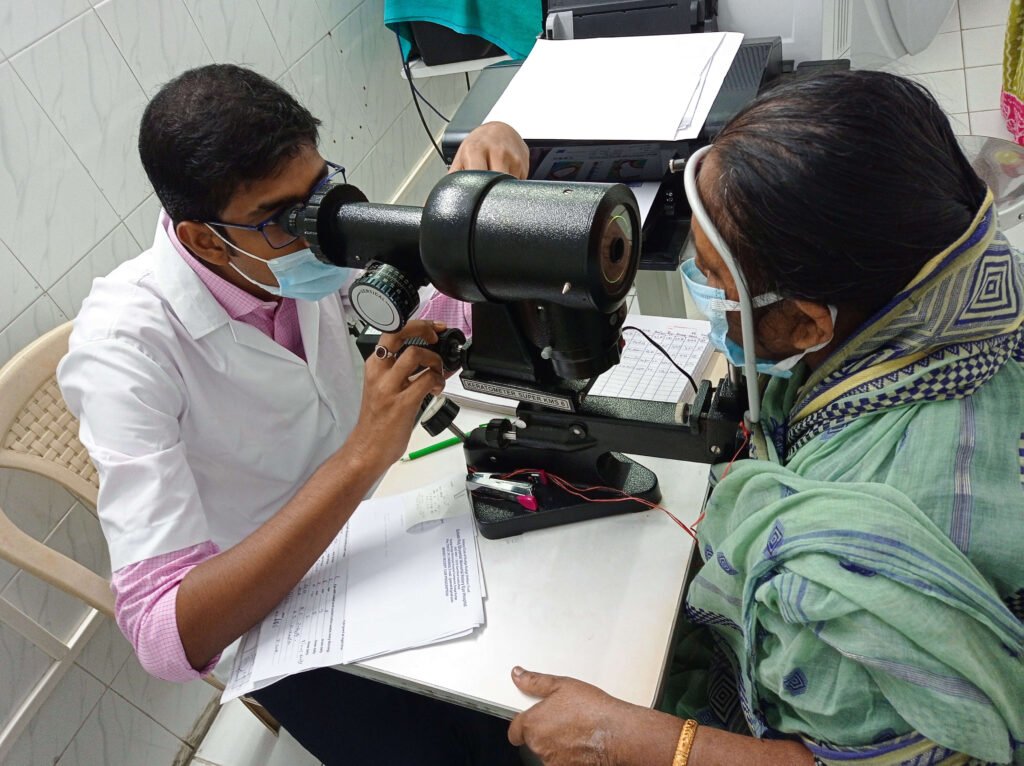
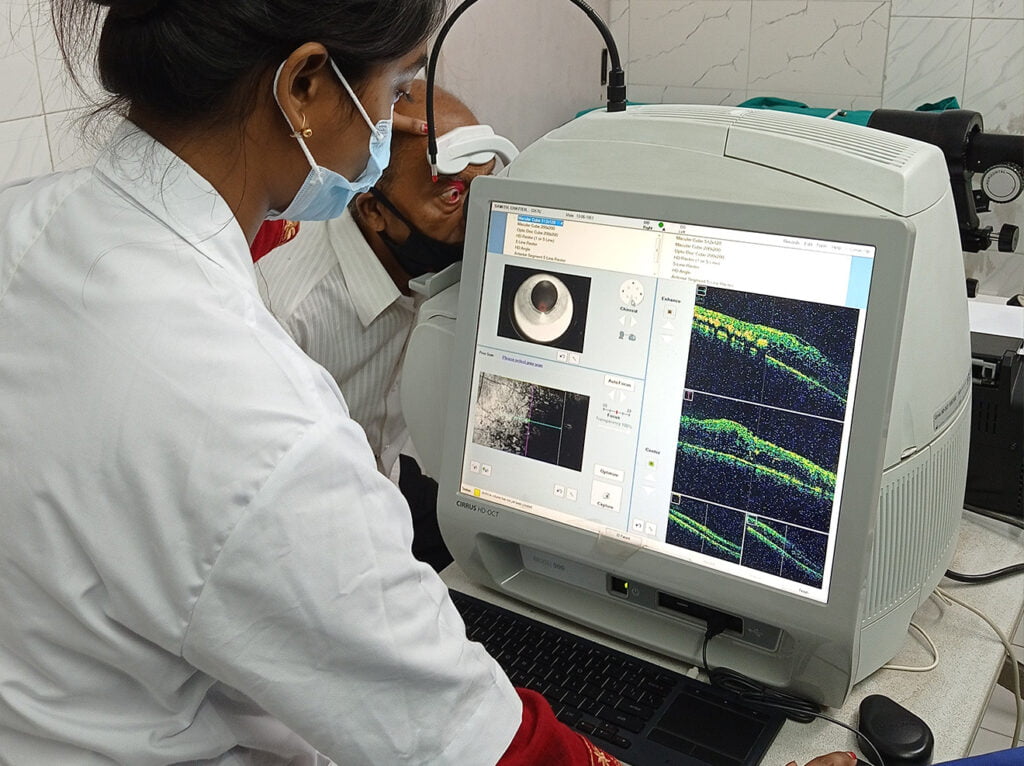
OCT
Optical coherence tomography (OCT) is a non-invasive medical test that uses light waves to take detailed images of the retina. It is commonly used to diagnose and monitor a variety of eye conditions, including age-related macular degeneration, glaucoma, and diabetic retinopathy. The test is painless and does not require any special preparation.
USG
Ultrasound (USG) is a medical diagnostic technique that uses high-frequency sound waves to produce images of the inside of the EYE. It is often used to examine the eyes and surrounding structures, such as the optic nerve and the blood vessels in the eye. A computer processes the returning sound waves and creates a detailed image of the eye. Ocular ultrasound is a non-invasive and painless procedure that can be used to diagnose and monitor a variety of eye conditions, such as retinal detachment, tumors, and inflammation.
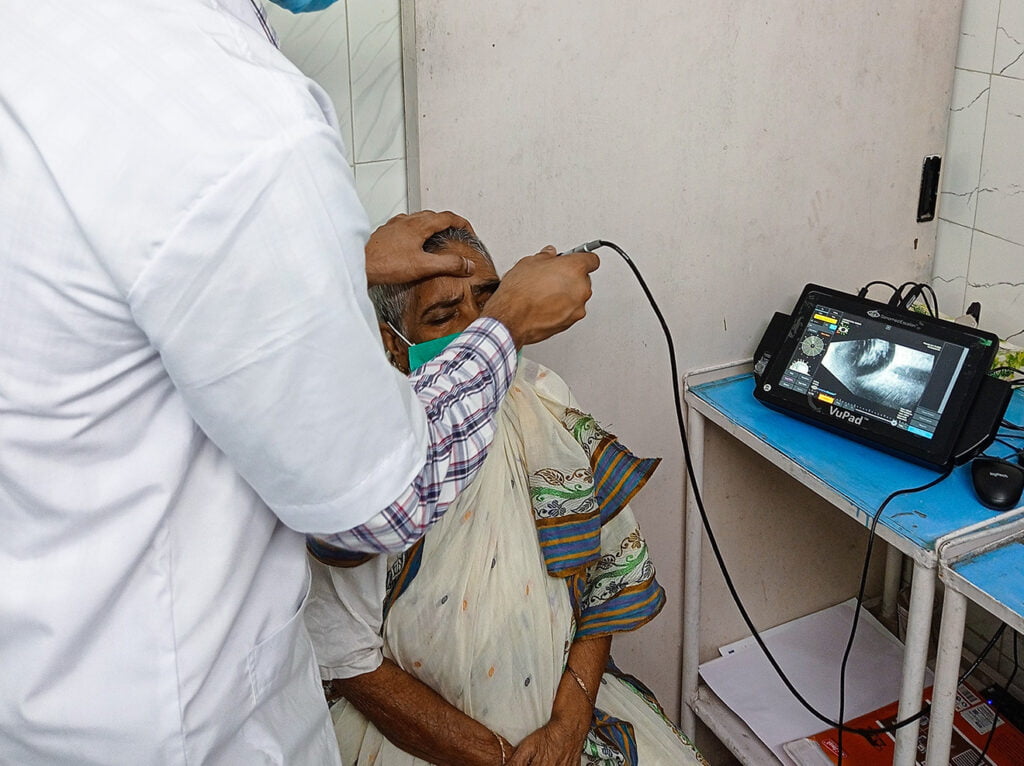

Perimetry
Perimetry is a medical test used to measure the function of the visual field, or the area of the visual environment that can be seen at one time. It is often used to diagnose and monitor conditions that affect the visual field, such as glaucoma. The resulting map of the visual field can be used to identify areas of vision loss and to monitor the progression of certain eye conditions
Yag Laser
Yag laser is a type of laser used in ophthalmology to treat a variety of eye conditions. It is most commonly used to treat posterior capsular opacification, a condition that occurs after cataract surgery in which the back part of the lens capsule (a thin, clear membrane inside the eye) becomes cloudy. The Yag laser creates a small hole in the cloudy capsule, allowing light to pass through and improving vision. The procedure is quick and relatively painless, and most patients return to their normal activities the same day. Yag laser may also be used to treat other conditions, such as glaucoma and retinal detachment
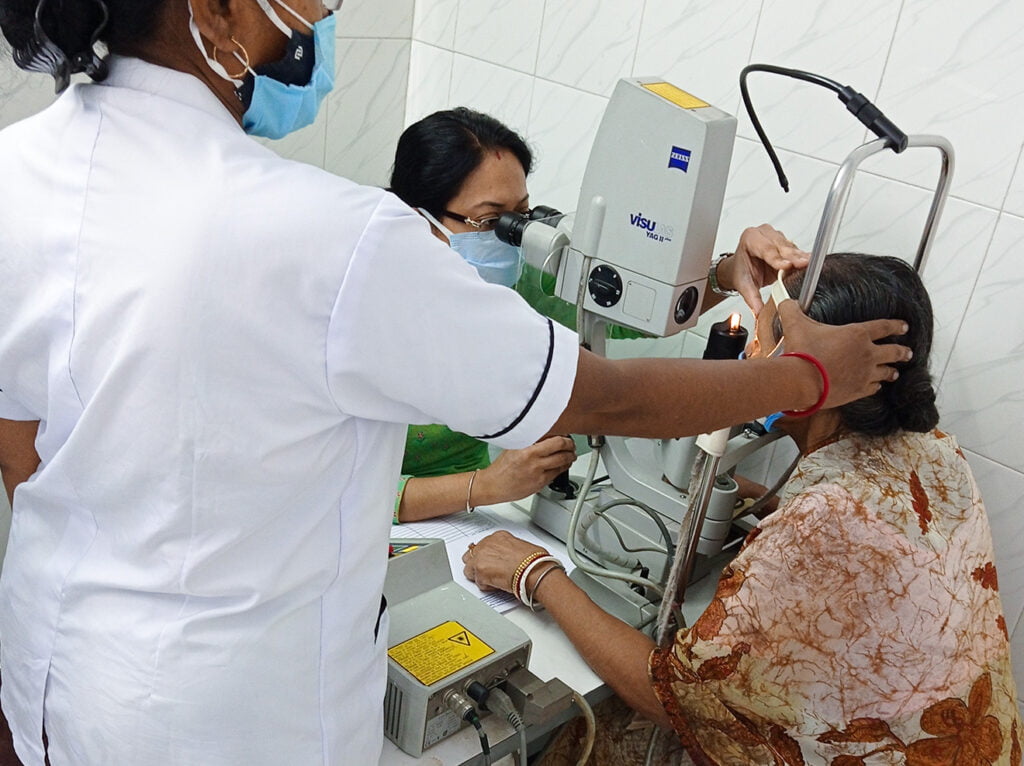

Autoref
An autorefractor (also known as an autoref) is a machine that measures the refractive error of the eye, which is the amount of lens power needed to correct blurry vision. It is often used in the evaluation and treatment of vision problems such as nearsightedness, farsightedness, and astigmatism. Autorefraction is a quick and painless procedure . It is often used as a starting point for more detailed eye examinations, and may be combined with other testing methods to provide a more complete picture of an individual’s eye health and vision.
Biometry
Biometry is a medical procedure used to measure the size and shape of the eye, specifically the cornea, the lens, and the distance between the two. It is often used in the evaluation and treatment of vision problems such as nearsightedness, farsightedness, and astigmatism. There are several different methods of biometry, including ultrasound, laser interferometry, and partial coherence interferometry.


NCT
NCT stands for non-contact tonometry, a medical procedure used to measure the pressure inside the eye (intraocular pressure or IOP). Elevated intraocular pressure is a common sign of glaucoma, a group of eye diseases that can lead to vision loss and blindness. Non-contact tonometry is a quick, painless, and non-invasive method of measuring intraocular pressure.
Optical Biometry
Optical biometry is a precise and non-invasive method used in ophthalmology to measure various ocular parameters. Advanced optical technology provides accurate measurements of the eye’s axial length, which is crucial for determining the power of intraocular lenses (IOLs) used in cataract surgery and refractive lens exchange. Optical biometry replaces traditional ultrasound-based techniques, offering numerous advantages such as improved accuracy, reduced invasiveness, faster measurement times, and greater patient comfort. The procedure involves directing a low-energy laser beam into the eye, interacting with the ocular structures, and providing precise measurements for calculating the appropriate IOL power.
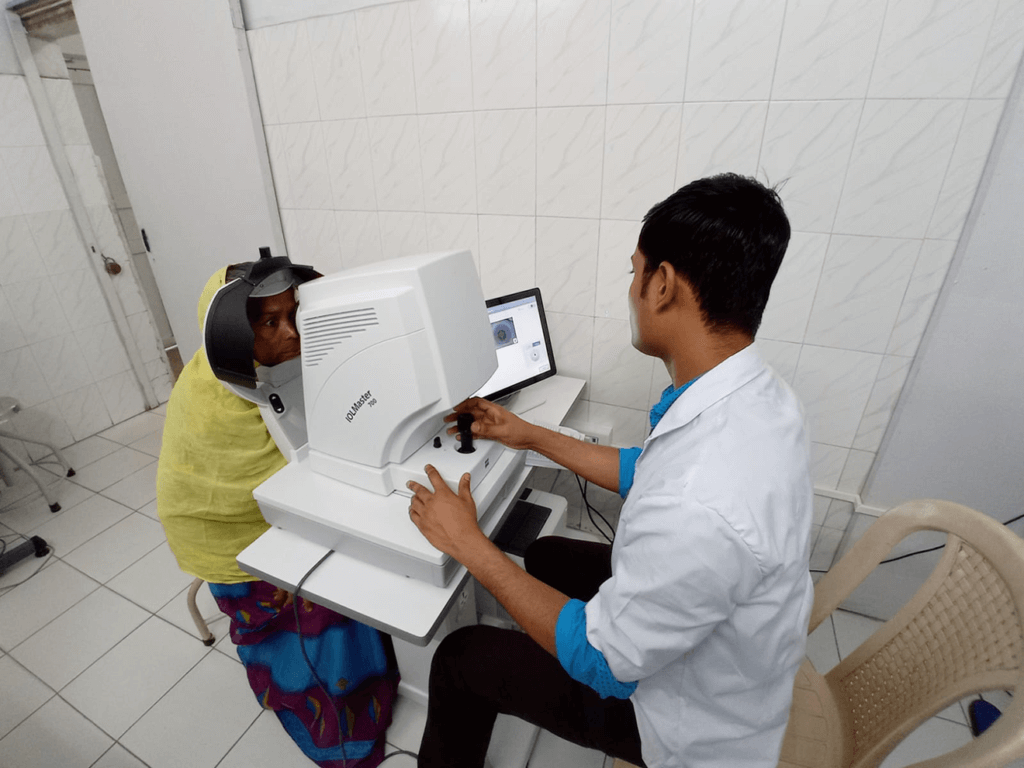
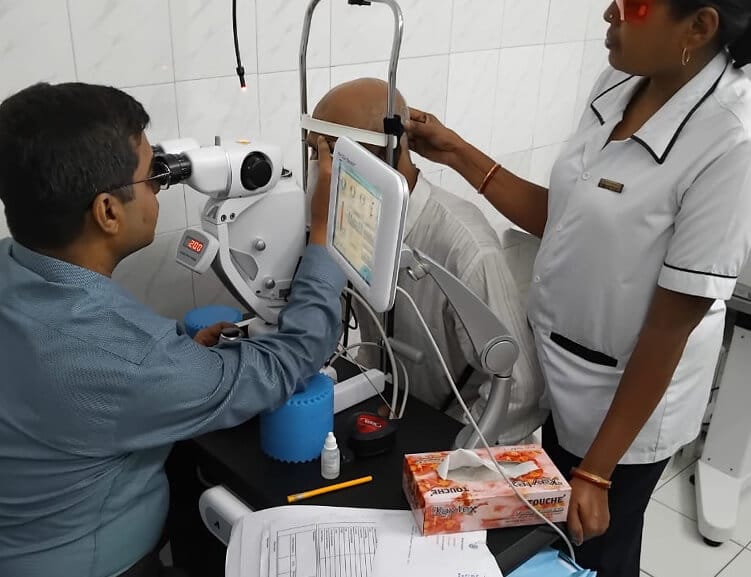
Green Laser
Green lasers emit a bright, highly visible green light, typically at 532 nanometers, making them more noticeable than red or blue lasers. They are widely used in astronomy, presentations, outdoor signaling, construction, and scientific research due to their clarity and precision. Their long-range visibility and versatility make them ideal for both professional and recreational applications.
Vitrectomy Machine
A vitrectomy machine is a specialized medical device used in eye surgeries to remove and replace the vitreous gel inside the eye. Essential in treating conditions like retinal detachment, macular holes, and diabetic retinopathy, it ensures precision by combining suction, cutting, and fluid management. Its advanced functionality allows surgeons to perform delicate procedures with accuracy, promoting better patient outcomes.
